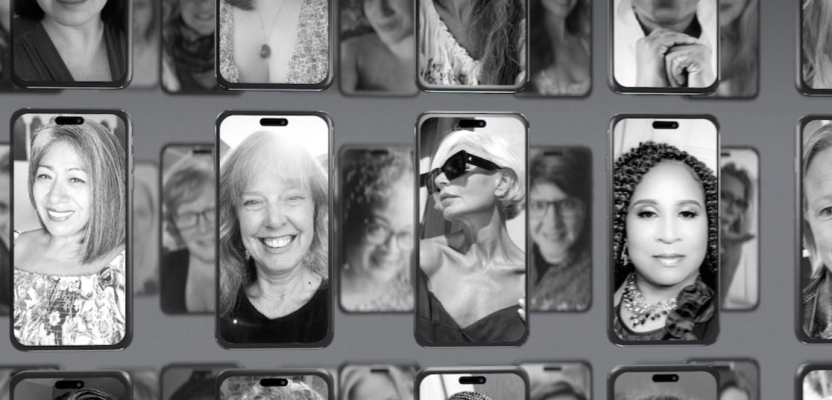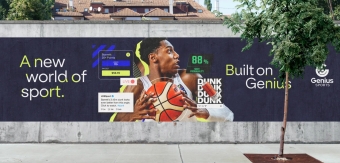A few years ago, the odious phrase “OK, boomer” became the de facto clarion call of every social media influencer under the sun. It’s a phrase that underlines popular culture’s general distain of anyone (or anything) over the age of 40 and as I myself slowly approach that gilded age, I can honestly say the phrase irks me even more.
The thing is though, popular culture always informs adland and with agencies and brands scrambling to captivate the fleeting attention of Gen Z and millennial audiences, an influential and affluent demographic is often left in the shadows: the baby boomers.
Despite holding the lion's share of disposable income and contributing a hefty chunk to consumer spending, boomers are frequently overlooked by marketers who mistakenly believe that youth is synonymous with innovation and “taste”. I think it’s time we shine a light on this perplexing paradox and explore why the industry continues to sideline a generation with both the means and the desire to spend.
The Boomer Market: A Wealth of Opportunity
Baby boomers, defined as those born between 1946 and 1964, are a generation that commands significant financial power. They control about 70% of disposable income in the United States and contribute to 30% of consumer spending. This generation has benefited from decades of economic growth, resulting in substantial savings, home equity, and investments. Moreover, many boomers are still actively working or have returned to the workforce, further enhancing their spending capacity.

Zara Picken
Contrary to the perception that boomers are disengaged from modern technology, they are increasingly tech-savvy. A growing number of boomers are active on social media platforms such as Facebook, Instagram, and even TikTok, where they engage with content and share their own creations. This digital engagement presents a ripe opportunity for advertisers to connect with boomers in spaces where they are already active.
Misconceptions and Stereotypes
One of the primary reasons advertisers neglect boomers is due to entrenched stereotypes. Marketers often focus on youth-centric trends, believing that younger generations are more influential in shaping market dynamics. There's a misguided assumption that older consumers are resistant to new technologies and uninterested in the latest products or experiences.
However, these assumptions are increasingly outdated. Boomers are not only embracing technology but are also enthusiastic consumers of new products. Research indicates that boomers frequently purchase new items online and are open to trying new brands. They value authenticity and traditional brand values, which can be a powerful differentiator for companies willing to cater to their preferences.
The Pitfalls of Ageist Advertising
Ignoring boomers is not just a missed opportunity; it's a strategic oversight that can cost brands dearly. Ageist advertising, which either stereotypes older adults or excludes them altogether, alienates a substantial and lucrative market segment. This demographic is not only financially robust but also loyal to brands that acknowledge and respect their needs and preferences.

Zara Picken
Age-inclusive marketing, on the other hand, can yield significant benefits. Brands that have embraced this approach have seen positive outcomes. For instance, campaigns that feature diverse age groups, including boomers, tend to resonate well across all demographics, promoting inclusivity and broadening the brand's appeal. Companies like L'Oréal and Dove have successfully launched campaigns celebrating age diversity, which have enhanced their brand image and market reach.
Strategies for Engaging Boomers
Authenticity and Trust: Boomers value authenticity and are drawn to brands that uphold traditional values while also being transparent and trustworthy. Advertisers should focus on creating genuine connections rather than relying on gimmicks or superficial trends.
Tech-Savviness: Recognise and use the growing tech-savviness of boomers. This includes not only social media engagement but also making websites and online shopping experiences user-friendly for older adults.
Content Creation and Engagement: Encourage and highlight user-generated content from boomers. Showcasing their stories, experiences, and recommendations can create a sense of community and authenticity.
Cross-Generational Appeal: Develop campaigns that appeal to multiple generations. Highlighting the shared values and interests between boomers and younger generations can foster a broader and more inclusive brand appeal.
Health and Wellness: Many boomers are focused on maintaining an active and healthy lifestyle. Brands that offer products and services related to health, fitness, and wellness can tap into this growing interest.
OK, Boomer
The neglect of baby boomers by advertisers is a puzzling oversight given their substantial economic power and increasing digital engagement. In essence, I think the best way for advertisers from both sides of the aisle to rectify this is to simply ignore the stereotypes.
There are dozens of top brands already tapping into the boomer market with great success. TripAdvisor, for example, has no shame in its boomer-targeted advertising and the results speak for themselves, with the brand experiencing a brand equity increase of over 10% between 2023 and 2024. Skincare brand Dove has also been defiantly “pro-age” with their creative for years now and, as a result, most women over the age of 30 rank Dove as their preferred skincare brand.
It just goes to show that, by overcoming outdated stereotypes and embracing inclusive marketing strategies, brands can unlock a wealth of opportunities with this affluent and influential demographic. It's time for advertisers to recognise the value of boomers and tailor their efforts to engage this generation more effectively, ensuring they don't miss out on a market with more time to kill and more cash to splash.
Another Creative Opinion

Monica Majumdar, Head of Strategy, Wavemaker UK
Advertising is an attractive industry – we create the adverts that get society talking. The holy grail is when members of the public start talking about your advert organically, or it becomes a social cache. Vibrant, youthful characters tend to feature as protagonists.
Despite the conversation in wider society evolving around issues like age and ageism, the advertising industry hasn’t caught up. Research by CreativeX reveals that only 4% of ads globally feature individuals over the age of 60. Why is that?
We looked at the briefs that come through our agency and came to the realisation that roughly 90% of our client briefs call out audiences between the ages of 16-44. It’s as if people aren’t potential consumers after 45. This is a major oversight of the marketing industry, particularly when 43% of the UK population is over the age of 45. Over 60s have 12 times the wealth of Gen Z, yet we get more briefs for Gen Z.
Of course, a brand must always look to future growth opportunities, and conventional wisdom says that will need to be from younger audiences to future-proof a brand. But as an industry, I’m seeing fewer briefs calling out both growth and core audiences – there’s been a bad habit of calling growth audiences the core audience.
This then skews the creative. Aspirational audiences have always been a core element of brand development. Alongside the brand purpose, mission and platform, there is in the mind of the brand team, the creative team and the media team whom we’re designing the brand or product for. This is who is often represented in adverts.
I was speaking to a marketing exec at a recent industry talk, and in the discussion afterwards, he commented on my argument by asking ‘So why is it a bad thing to have a 25-year-old represented when everyone aspires to be younger?”. Therein lies the problem - the assumption that everyone wants to be 25.
It is a human truth that we aspire to be younger, but that isn’t universally 25. YouGov survey data shows that in the UK and the US, adults in their 20s want to be 25, and adults in their 30s want to be 30. In your 40s, 36-38 is the aspirational age; in your 50s it’s 41-47; in your 60s, 50-55, and in your 70s, around 60. Only 20-year-olds want to be 25.
It all stems from the fact that marketing briefs stick to a narrow age range of 16-44. The aspirational audience we build for will naturally fall between 25 and 38. Thereby alienating most audiences over 45.
We are in the business of relevance. If I can’t relate to the dream you are trying to sell me as a brand, why should I tune in? You won’t even make it to the consideration set, as I won’t see you as a brand for me. And being more relevant includes thinking about their media consumption and buying habits.
Back in 2015, there was a 58% crossover in media consumption between those under 35 and those over 55, but now there is only a 7% overlap. Brands must design media approaches specific to an over-55 audience to create mental availability. There is a benefit to doing this, because contrary to popular belief, Wavemaker’s Cost of Living research has shown that only 40 per cent of over 45s are brand loyal – they have been happily adding new brands to their basket, versus 60% of under 35s sticking to the brands they have always used.
Ultimately, we need to challenge the notion that growth audiences are only young audiences. Growth can come from the wealthier over 45s. But we also need to be diligent in steering away from defining audiences by age demographics. Psychographics and attitudes to define an audience used to feel like speculative exercise – because ultimately when we bought media, we whittled down the audiences to age groups.
However, media is much more sophisticated now across all channels – as a result, we can shed those practices. Let’s embrace the new growth opportunities that can come from looking at the over-45 demographic who have more cash to spend.




